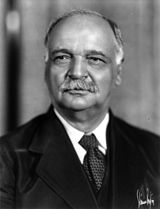United States Senate elections, 1924
|
|
||||||||||||||||||||||||||||||||||||||||||||||||||||||||
|---|---|---|---|---|---|---|---|---|---|---|---|---|---|---|---|---|---|---|---|---|---|---|---|---|---|---|---|---|---|---|---|---|---|---|---|---|---|---|---|---|---|---|---|---|---|---|---|---|---|---|---|---|---|---|---|---|
|
||||||||||||||||||||||||||||||||||||||||||||||||||||||||
|
34 of the 96 seats in the United States Senate 49 seats needed for a majority |
||||||||||||||||||||||||||||||||||||||||||||||||||||||||
|
||||||||||||||||||||||||||||||||||||||||||||||||||||||||

Results including special elections
Democratic gains Republican gains Democratic holds Republican holds |
||||||||||||||||||||||||||||||||||||||||||||||||||||||||
|
||||||||||||||||||||||||||||||||||||||||||||||||||||||||
The United States Senate elections of 1924 was an election for the United States Senate which coincided with the election of Republican President Calvin Coolidge to a full term. The strong economy and Coolidge's popularity helped Republican candidates increase their majority by four, although several interim appointments had worsened their numbers since the 1922 election; as a result, the party achieved a net gain of only one seat since the previous voting cycle.
The Republicans took open seats in Colorado and Oklahoma, and defeated incumbents Augustus O. Stanley (D-Kentucky), David I. Walsh (D-Massachusetts), and Magnus Johnson (FL-Minnesota), but Democrats defeated Holm O. Bursum (R-New Mexico).
...
Wikipedia


